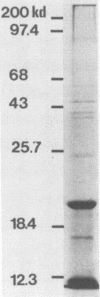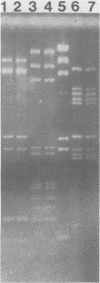Abstract
Bacteriophage ch2, a virulent bacteriophage of Lactobacillus bulgaricus CH2, was characterized according to its morphology, genome size, structural proteins, and growth kinetics. Electron micrographs revealed that bacteriophage ch2 has an icosahedral head of 50-nm diameter and a long tail of 170 nm. Its genome is linear and 35 kilobases in length, and its structural proteins consist of two major and eight minor proteins. One-step growth kinetics of bacteriophage ch2 under optimal conditions (45°C in MRS medium [Oxoid Ltd.]) showed that the latent time was 40 min, the rise period was 15 min, and the burst size was 130 bacteriophages per cell. To monitor the effects of bacteriophage infection on host growth and β-galactosidase production, the absorbance of the culture and the β-galactosidase activity were followed during the infection cycle. Before lysis the infected culture continued to grow and produce β-galactosidase at the same rate as the uninfected culture.
Full text
PDF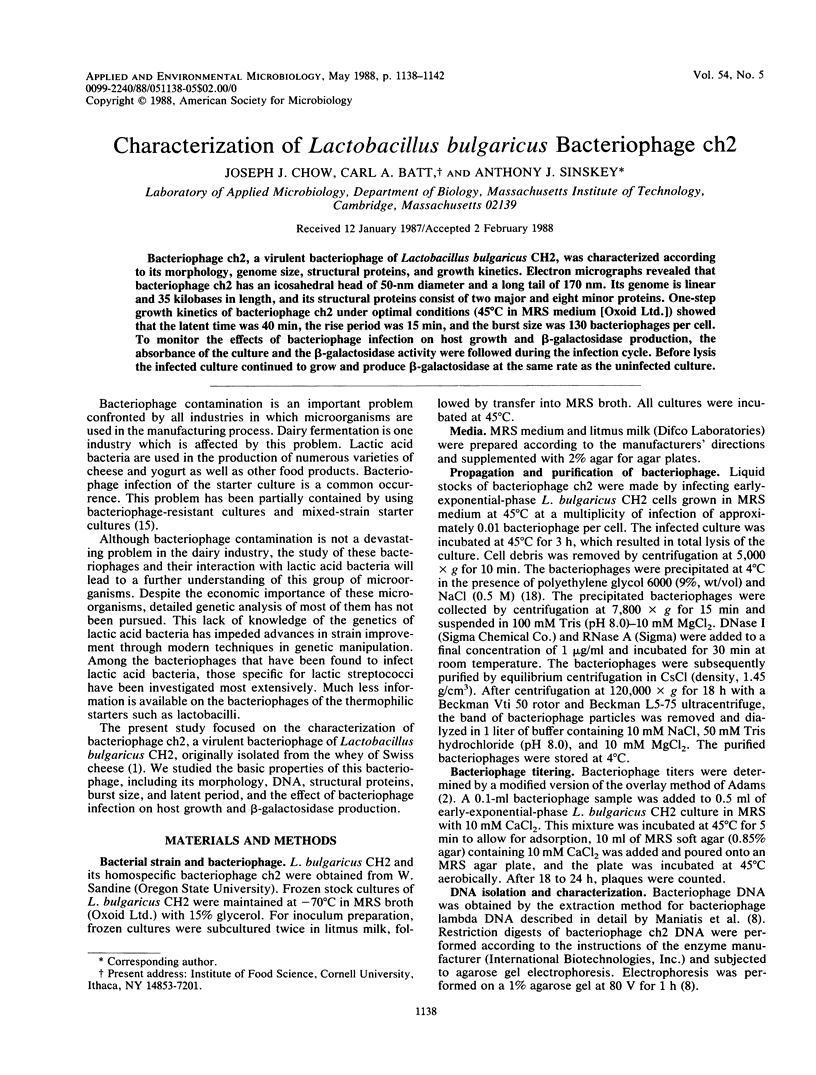
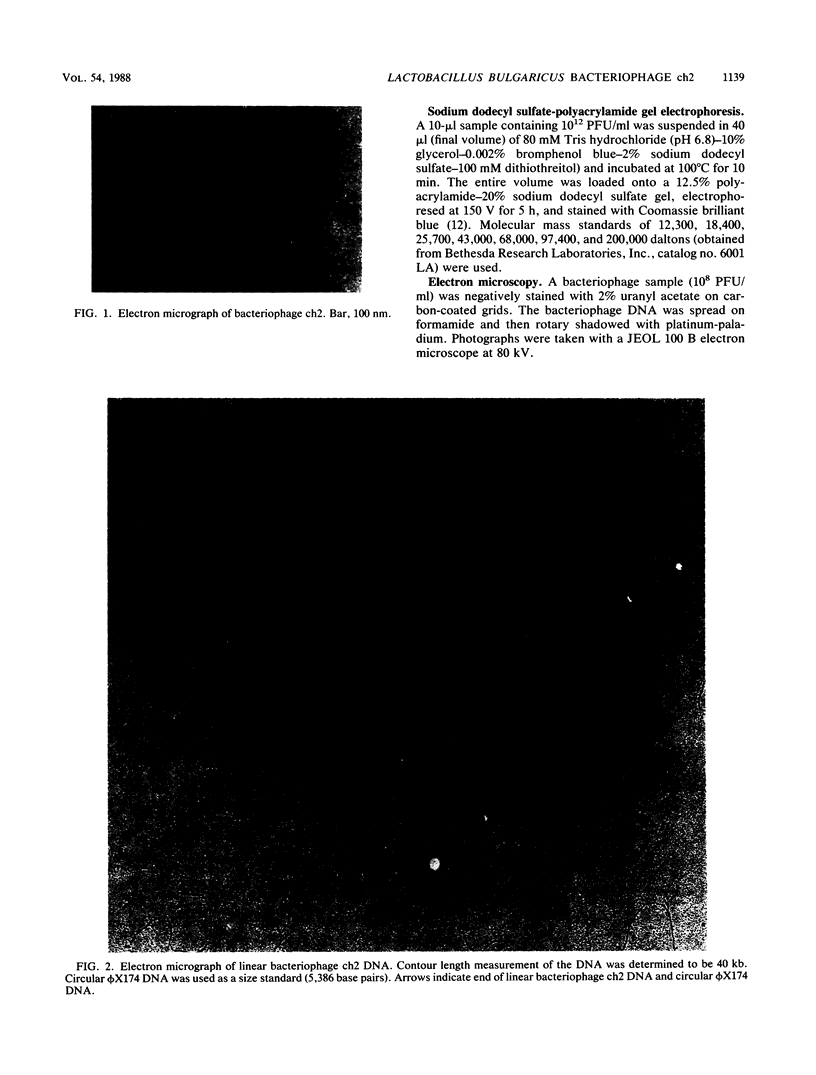
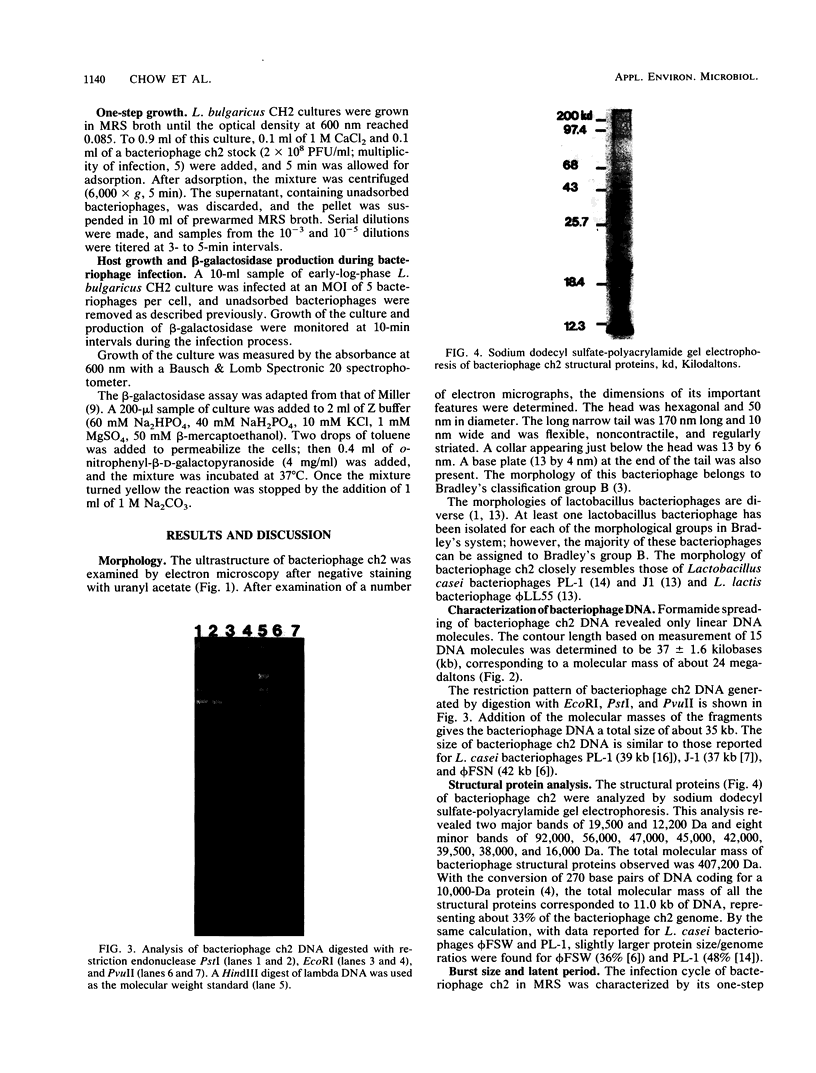
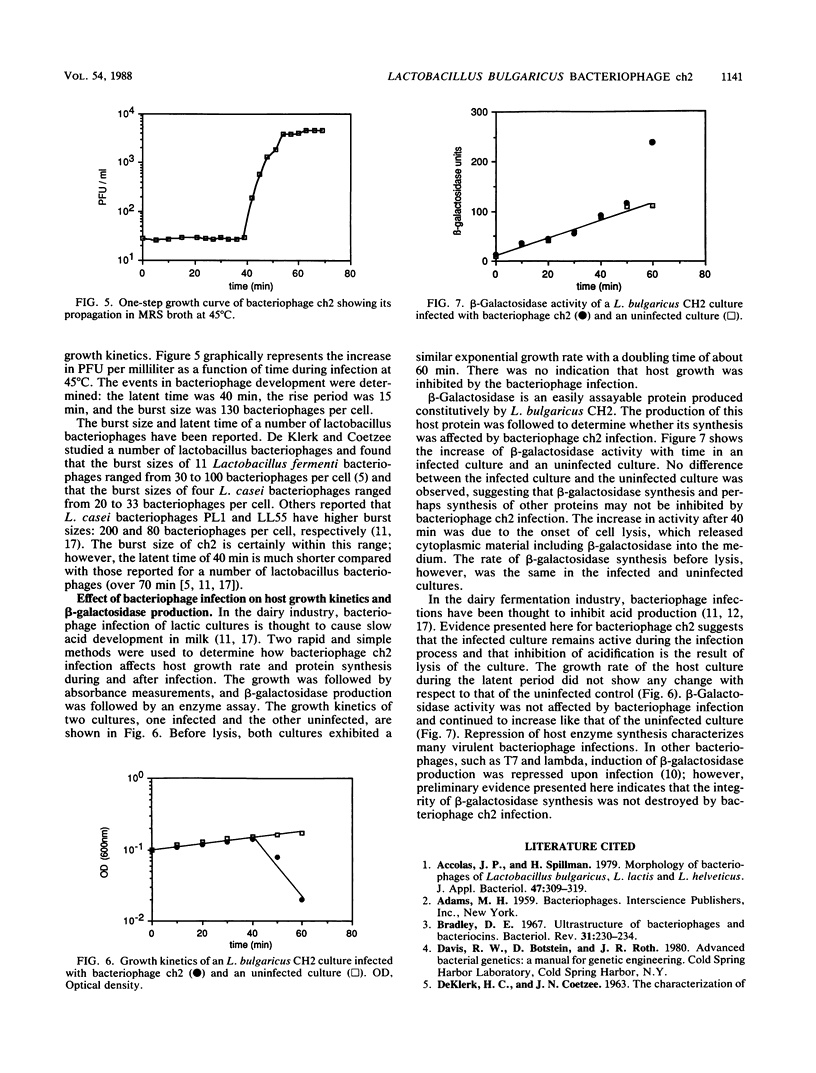
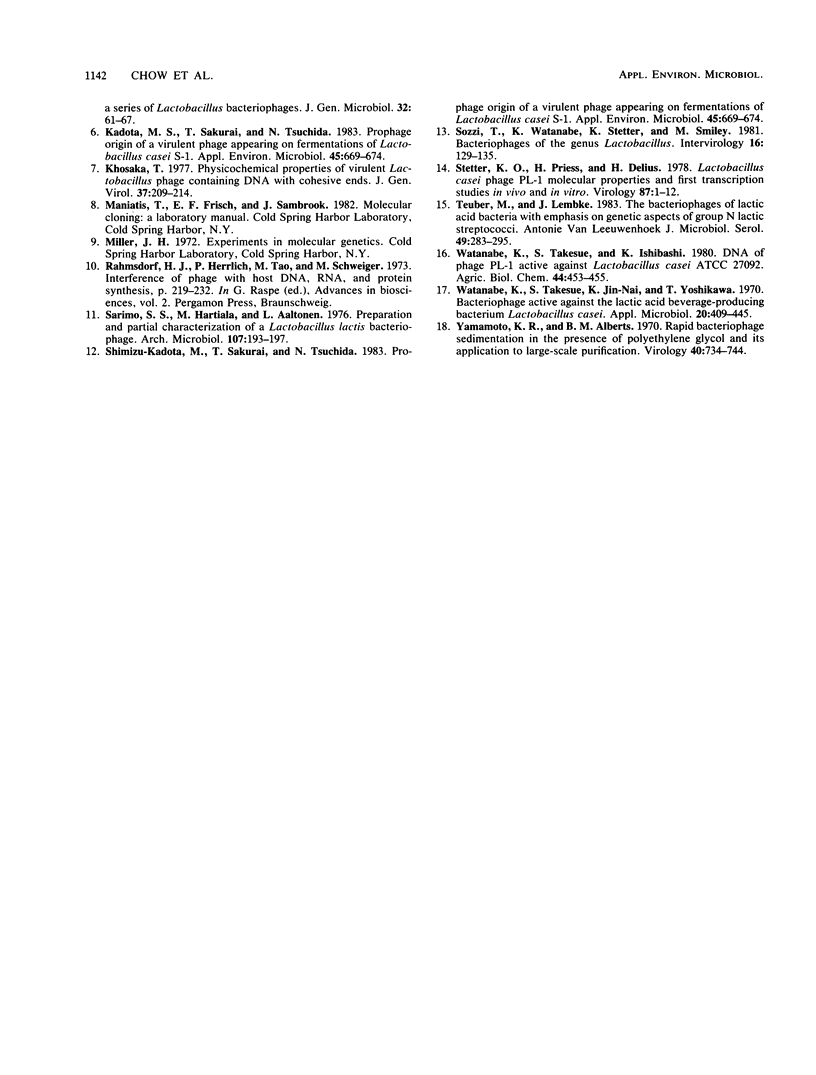
Images in this article
Selected References
These references are in PubMed. This may not be the complete list of references from this article.
- Bradley D. E. Ultrastructure of bacteriophage and bacteriocins. Bacteriol Rev. 1967 Dec;31(4):230–314. doi: 10.1128/br.31.4.230-314.1967. [DOI] [PMC free article] [PubMed] [Google Scholar]
- Shimizu-Kadota M., Sakurai T., Tsuchida N. Prophage Origin of a Virulent Phage Appearing on Fermentations of Lactobacillus casei S-1. Appl Environ Microbiol. 1983 Feb;45(2):669–674. doi: 10.1128/aem.45.2.669-674.1983. [DOI] [PMC free article] [PubMed] [Google Scholar]
- Shimizu-Kadota M., Sakurai T., Tsuchida N. Prophage Origin of a Virulent Phage Appearing on Fermentations of Lactobacillus casei S-1. Appl Environ Microbiol. 1983 Feb;45(2):669–674. doi: 10.1128/aem.45.2.669-674.1983. [DOI] [PMC free article] [PubMed] [Google Scholar]
- Sozzi T., Watanabe K., Stetter K., Smiley M. Bacteriophages of the genus Lactobacillus. Intervirology. 1981;16(3):129–135. doi: 10.1159/000149259. [DOI] [PubMed] [Google Scholar]
- Stetter K. O., Priess H., Delius H. Lactobacillus casei phage PL-1. Molecular properties and first transcription studies in vivo and in vitro. Virology. 1978 Jun 1;87(1):1–12. doi: 10.1016/0042-6822(78)90152-6. [DOI] [PubMed] [Google Scholar]
- Teuber M., Lembke J. The bacteriophages of lactic acid bacteria with emphasis on genetic aspects of group N lactic streptococci. Antonie Van Leeuwenhoek. 1983 Sep;49(3):283–295. doi: 10.1007/BF00399504. [DOI] [PubMed] [Google Scholar]
- Watanabe K., Takesue S., Jin-Nai K., Yoshikawa T. Bacteriophage active against the lactic acid beverage-producing bacterium Lactobacillus casei. Appl Microbiol. 1970 Sep;20(3):409–415. doi: 10.1128/am.20.3.409-415.1970. [DOI] [PMC free article] [PubMed] [Google Scholar]
- Yamamoto K. R., Alberts B. M., Benzinger R., Lawhorne L., Treiber G. Rapid bacteriophage sedimentation in the presence of polyethylene glycol and its application to large-scale virus purification. Virology. 1970 Mar;40(3):734–744. doi: 10.1016/0042-6822(70)90218-7. [DOI] [PubMed] [Google Scholar]





